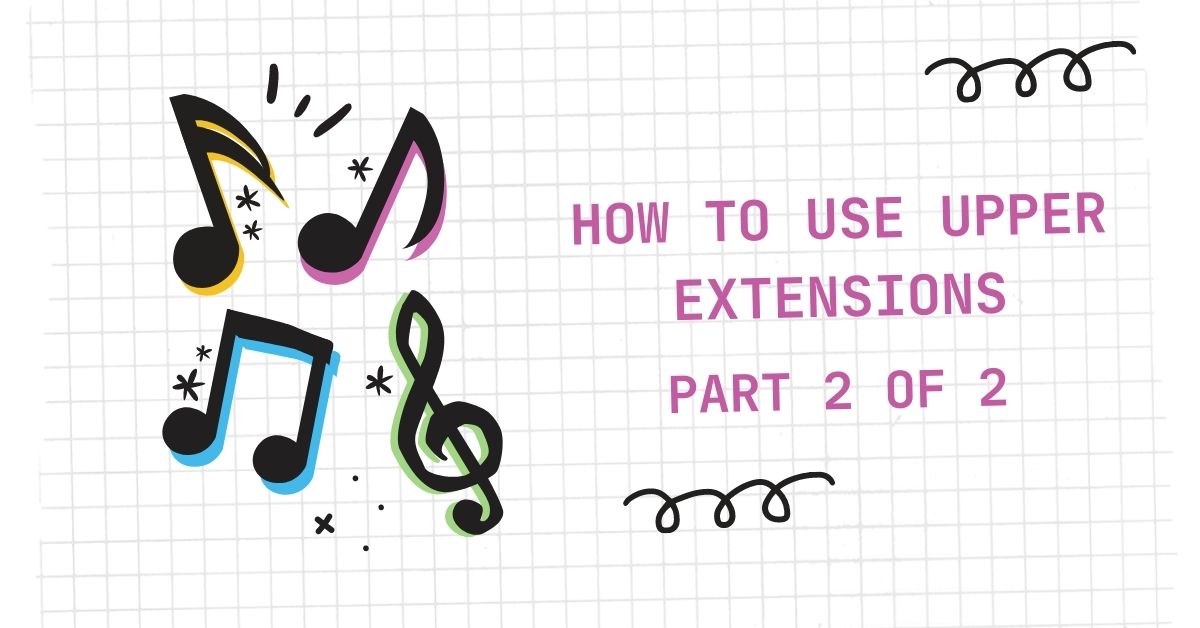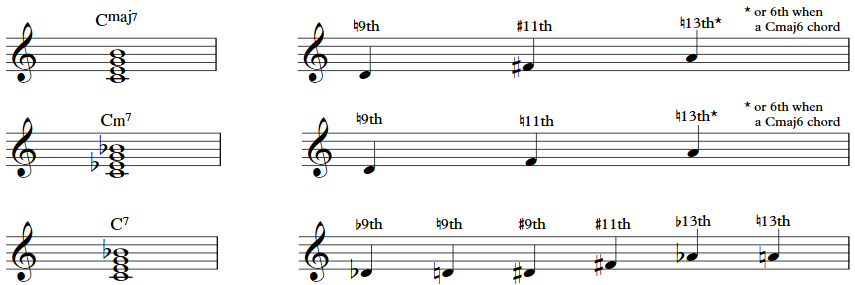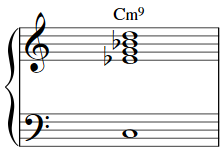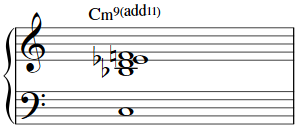How to Use Upper Extensions - Part 2 of 2

In Part 1 of our "Upper Extensions" article we discussed the terminology and theory that students often find confusing when studying this concept. Here in Part 2 we will discuss how and when to use upper extensions by examining a few specific examples:
- Available upper extensions;
- left hand chords for comping (specific to piano comping);
- harmonizing a melody.
Available Upper Extensions
Available upper extensions refer to the particular extensions that can be used on a given chord. Of course you really can use any extensions that you choose. It's all about what sounds good to you, what you want the listener to hear, and what sounds you intend to create. But there are some conventional rules that are important to learn because they are so generally and widely used.
Here is a helpful list of the available upper extensions for major 7th, minor 7th, and dominant 7th chords:
As you can see, the dominant 7th chord has quite a few altered extensions that can be used, meaning extensions that are either sharped or flatted.
Left-Hand Chords for Comping
The piano player's left hand is often comping, which means playing chords rhythmically in a manner that accompanies the player's right hand. These left-hand comping chords often use upper extensions in the voicing ("voicing" just means the way a chord is spelled). So while you might be accustomed to seeing a C minor 7 chord spelled like this...

In the example above we've included the 'C' (the root) in the bass clef so that you can hear the chord in context. Although you would play the chord with your left hand when comping, you may want to play the chord in your right hand and the root of the chord in your left hand when practicing. This will help you get familiar with the sounds of the various upper extensions.
Another possible voicing for a C minor 7 might include the 9th and the 11th, such as this:
As you can see, upper extensions allow for a lot of options, and therefore tone-colors and creativity in our chords.
Harmonizing a Melody
Piano players are commonly harmonizing melodies of popular songs for solo piano arrangements. Using upper extensions can add tremendously to the depth of harmony that we are able to create. Consider this treatment of the first few measures of "Someday My Prince Will Come":

Play through both of these examples at the piano to get a better sense of how upper extensions can add harmonic depth and color to your chords and harmonies.



